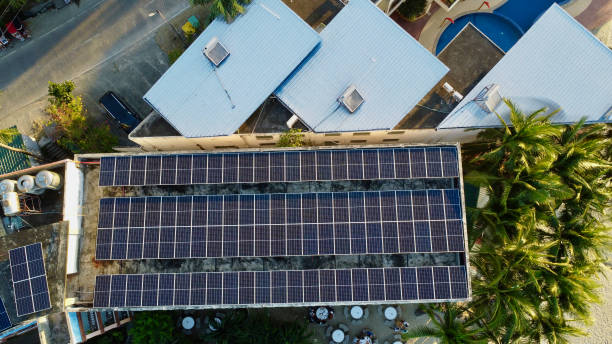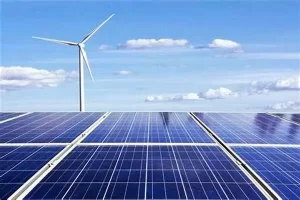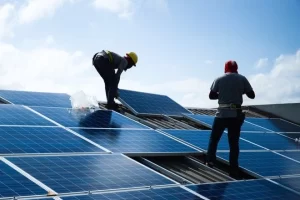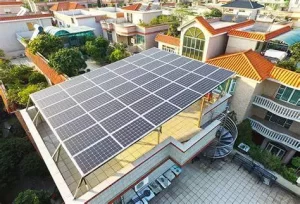Island Solar Energy Storage: Powering a Sustainable Future
In a world increasingly focused on sustainable energy solutions, the concept of island solar energy storage has emerged as a beacon of hope, especially for isolated island communities. Islands, often remote and dependent on imported fossil fuels for their energy needs, are now looking towards solar energy storage as a means to achieve energy independence and a cleaner, more sustainable future.
Solar energy, with its abundant supply and zero emissions, holds immense potential for islands. The sun’s rays shine consistently on many islands throughout the year, providing a reliable source of renewable energy. However, the intermittent nature of solar power – available only during daylight hours and subject to weather conditions – has traditionally been a challenge. This is where the importance of energy storage comes into play.
Energy storage systems for solar power on islands typically involve the use of batteries or other storage technologies. These systems store the excess solar energy generated during peak sunlight hours for use during times when the sun isn’t shining or when energy demand exceeds supply.

One of the key benefits of island solar energy storage is the reduction in reliance on expensive and environmentally harmful fossil fuel imports. Islands often have to transport diesel or other fuels over long distances, which not only incurs high costs but also contributes to significant carbon emissions. By harnessing solar energy and storing it for later use, islands can cut down on these imports and reduce their carbon footprint.
Take, for example, a small island in the Pacific. Previously dependent on diesel generators for electricity, the installation of a large-scale solar array coupled with an efficient energy storage system has transformed its energy landscape. The island now generates a significant portion of its electricity from solar power, with the stored energy ensuring a continuous supply even during cloudy days or at night.
The economic benefits of island solar energy storage are also substantial. Over time, the cost of solar panels and energy storage systems has been steadily decreasing, making these solutions more financially viable. In addition, the savings from reduced fuel imports can be redirected towards other essential services and infrastructure development on the island.
Moreover, solar energy storage promotes local job creation. From the installation and maintenance of solar panels to the management of the energy storage systems, a range of skilled and semi-skilled jobs can be generated within the island community. This not only boosts the local economy but also helps retain talent and build a sense of ownership and self-sufficiency.
Another advantage is the improvement in energy reliability and quality. With solar energy storage, islands are less prone to power outages and voltage fluctuations that are common with traditional diesel-based generators. This stable and consistent power supply is crucial for essential services such as healthcare, education, and communication.
However, implementing island solar energy storage is not without its challenges. The initial investment required for setting up the solar infrastructure and storage systems can be substantial. Islands may also face limitations in terms of available space for solar panel installations and the technical expertise needed for system operation and maintenance.
To overcome these challenges, partnerships between island governments, private enterprises, and international organizations are crucial. Funding and technical assistance programs can help bridge the financial gap and provide the necessary training and support.
Furthermore, advancements in technology are constantly improving the efficiency and affordability of solar energy storage. Newer battery chemistries and storage technologies are emerging that offer higher energy densities, longer lifespans, and faster charging times.
In conclusion, island solar energy storage represents a promising path towards a sustainable and resilient energy future for islands around the world. By capitalizing on their abundant solar resources and adopting innovative storage solutions, islands can not only meet their energy needs but also serve as models of sustainable development for other remote and isolated communities.
As we look to a future where clean and reliable energy is paramount, the success stories of island solar energy storage will undoubtedly inspire more regions to follow suit, driving us closer to a global transition to renewable energy sources and a healthier planet for all.
Contact us
- Email:[email protected]
- Tel: +86 13651638099
- Address: 333 Fengcun Road, Fengxian District, Shanghai
Get A Quote Now!
Related product links are available directly
Site storage products:Site storage products 归档 – (energystoragecontainer.com)
Lithium Battery:Lithium Battery 归档 – (energystoragecontainer.com)
Read more

Unveiling Photovoltaic+Energy Storage: Four Major Application Scenarios Leading the Future of Energy
In this way, the energy landscape is evolving, and one of the most thrilling developments in renewables is the integration of photovoltaics energy storage.

From Theory to Practice: Four Methods for Estimating Photovoltaic Power Generation
Photovoltaic power generation has become an essential part of modern energy solutions, particularly in home solar systems and distributed power applications

Rack-Mounted Lithium Iron Batteries: Creating Efficient and Reliable Energy Storage Solutions
When it comes to modern energy solutions, rack-mounted lithium iron batteries are taking center stage in a variety of industries. Whether you’re powering data centers, stabilizing energy for households, or keeping critical systems online at 5G base stations, these batteries have become the unsung heroes of our electrified world.

Late Night Energy Saving Tips: How to Maximize Electricity Savings During Off-Peak Hours
With rising energy costs, homeowners are increasingly exploring innovative ways to save on their electricity bills. One effective approach is utilizing off-peak hours—times when electricity rates are significantly lower due to reduced demand.
